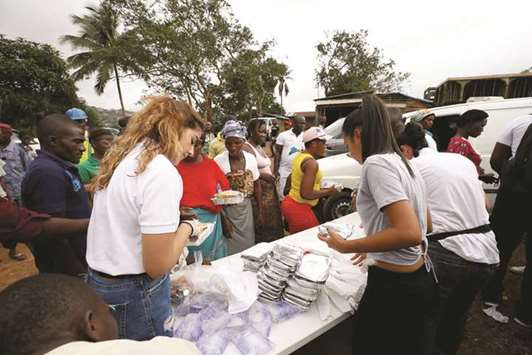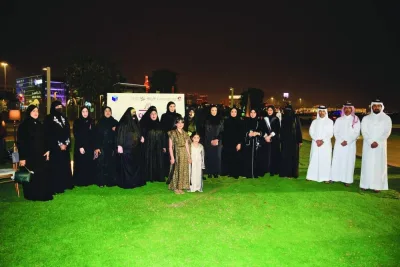Gathered in a Freetown church, worshippers were struggling yesterday to come to terms with the devastation wrought by the flooding and mudslide that struck the Sierra Leone capital six days ago, as the arduous search for bodies continued.
“I just close my eyes and imagine, I say, ‘It could have been me’,” says Angela Johnson, one of about 50 parishioners at St Paul’s Catholic Church in Regent, the hilltop community that bore the brunt of the catastrophe.
“When I wake up to get up from my bed, I see darkness. It could have been me buried in that rubble, oh my God.”
Outside, the hill that was once covered with trees bears the red-orange scar of the mudslide which struck last Monday after three days of rain, slamming into ramshackle homes and trapping families while they slept. “It’s a sermon of hope and consolation that we are one family,” Father John Nat Tucker said after the mass. “We must come together as Sierra Leoneans.”
Recovery efforts in Sierra Leone, one of the world’s poorest countries, are being hampered by logistical and technical constraints, and as the search drags on, many of the bodies being dug up are too mutilated or decomposed to identify. “The only machinery we have at the recovery site are eight excavators,” says Colonel Abu Bakarr Sidique Bah, who is leading the search, adding that the steep and muddy terrain was making it hard to operate the machines. As a result, workers are tracking stray dogs when they try to dig up bodies to feed on, allowing them to identify areas where they can start digging.
“We do not have helicopters or sniffer dogs or trained forensic experts to do the work,” Bah said. “We are currently making do with what is available by using our bare hands and shovels to dig up the rubble in search of dead bodies in areas the excavators are not able to operate.”
But a Spanish forensics team has arrived to assist the search and recovery efforts, and a military disaster response team from Liberia arrived in Freetown on Sunday. Several hundred people are still missing, making it likely that the official death toll of 441 will rise. The Sierra Leone authorities admit they are incapable of estimating how many people are unaccounted for. Thomas Benson, an electrical engineer, said he used his hands to extract the bodies of his sister and niece, two of nine family members he lost in the early hours of Monday.
All that is left of his five-bedroom home, which had a grocery shop on the ground floor, are the iron sheets used for the roof. But after seeing the piles of corpses at the Freetown morgue, he volunteered to help the burial team pack body bags.
Nearly a week later, “I’m still in shock for what has happened to my family,” he told AFP. Those who escaped have been told to evacuate the disaster zone, as the government worries about potential outbreaks of cholera, diarrhoea and other water-borne diseases as the water stagnates.
But that has left residents packing into makeshift shelters or with neighbours in the overcrowded capital of 1.2mn people, and the government has not yet said how it intends to relocate them. Flooding is an annual menace in Sierra Leone, where rickety homes are regularly swept away by seasonal rains. In 2015, floods killed 10 people and left thousands homeless.
According to the charity Save the Children, the latest disaster killed 122 children and left 123 orphaned. The Red Cross has issued an emergency funding appeal.
Britain, the former colonial power in Sierra Leone, has pledged £5mn ($6.5mn), while China has pledged $1mn and Togo $500,000. International aide was starting to trickle in: A plane from Ghana has arrived to supply blankets, mattresses and clothing, followed by a plane from Morocco.

A non-governmental organisation (NGO) is seen distributing meals to victims of the mudslide at the internally displaced persons camp in Regent.


